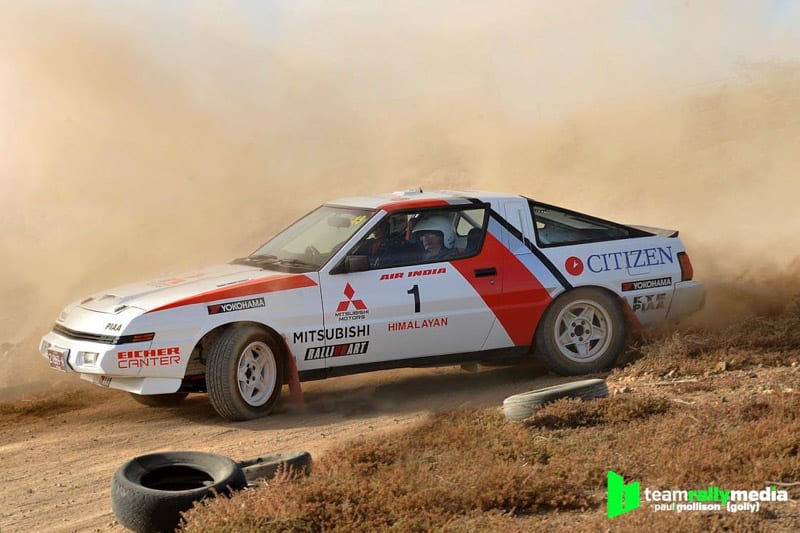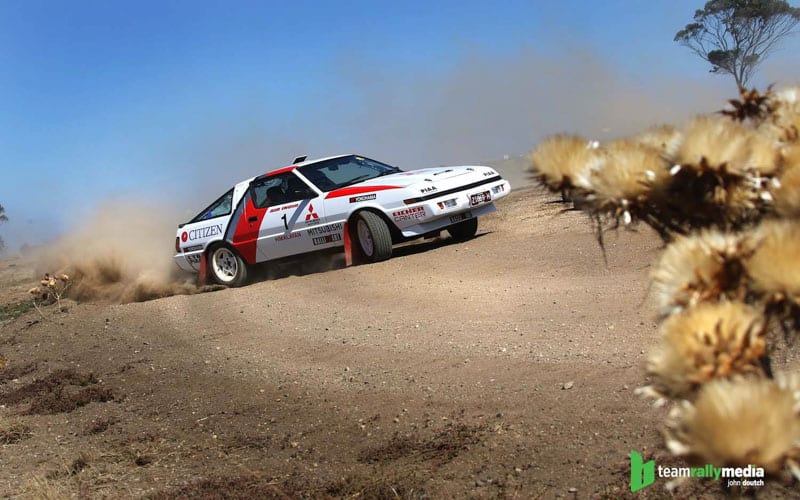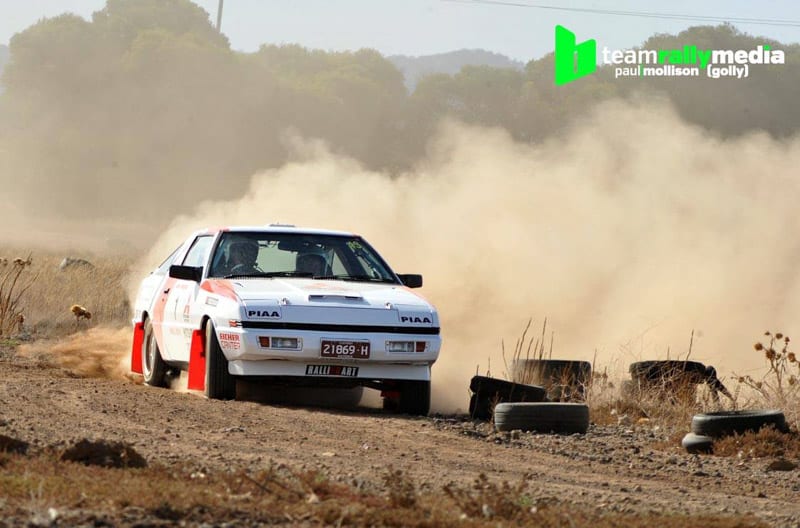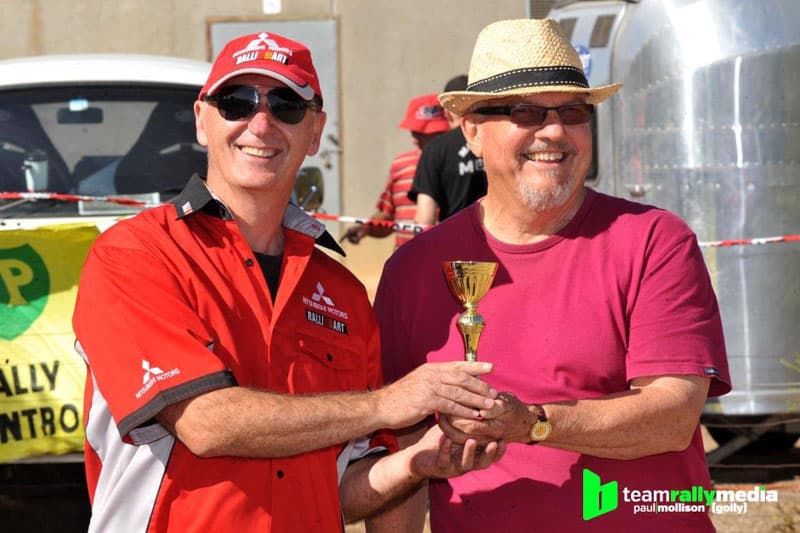
Brian Shand (left) receives his award at this year's Retro Rally Day. Photo: Paul Mollison
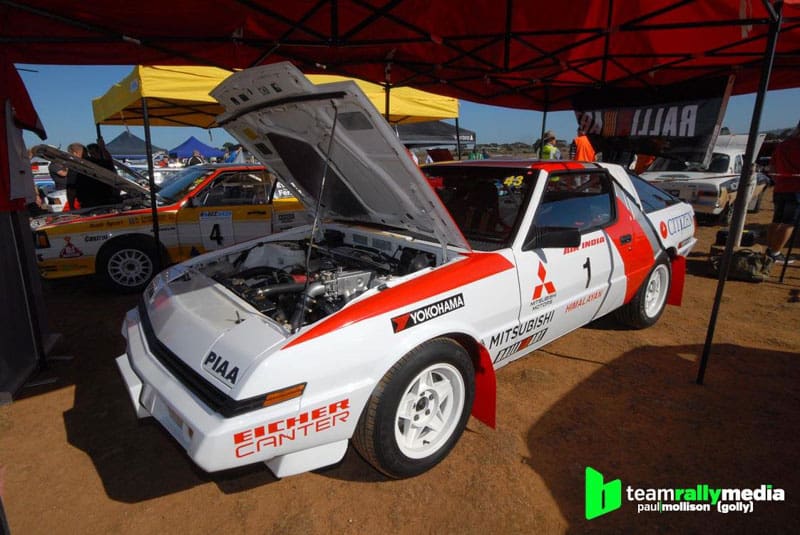 Our feature car, a 1984 JB Starion owned by Brian Shand, is a reincarnation of one of Australia’s most famous Mitsubishi’s, and one that has had a widely varied career.
It has competed successfully not only in Australia, but in a number of high profile overseas international events as well.
Having said the car was ‘reincarnated’ deserves some explanation and begs the question – when is a car no longer the original that it’s purported to be?
To clarify: because of the rough and tumble world of rallying, there is a fair likelihood that a large percentage of the historic rally cars that are still around today are not the exact item that originally hit the gravel many years ago.
There are few which haven’t had at least one engine swap or had the mechanicals transferred to a new shell.
To our way of thinking that’s not critically important. What is important is that at least some of each car has been preserved from the original, and remains today as a faithful reconstruction of a famous car.
Having said that, Brian’s Starion is as close to the original as you can possibly get. At this year’s HRA Retro Rally Day, the car won most original post-1980 rally car, and best presented car on the day!
This faithfully (and beautifully) restored example has a long history, having been built originally in 1985 by David (Dinta) Officer and his wife, Kate, for the 1986 Australian Rally Championship, and to replace their Group G Mitsubishi Galant that took them to an ARC title in 1984.
Our feature car, a 1984 JB Starion owned by Brian Shand, is a reincarnation of one of Australia’s most famous Mitsubishi’s, and one that has had a widely varied career.
It has competed successfully not only in Australia, but in a number of high profile overseas international events as well.
Having said the car was ‘reincarnated’ deserves some explanation and begs the question – when is a car no longer the original that it’s purported to be?
To clarify: because of the rough and tumble world of rallying, there is a fair likelihood that a large percentage of the historic rally cars that are still around today are not the exact item that originally hit the gravel many years ago.
There are few which haven’t had at least one engine swap or had the mechanicals transferred to a new shell.
To our way of thinking that’s not critically important. What is important is that at least some of each car has been preserved from the original, and remains today as a faithful reconstruction of a famous car.
Having said that, Brian’s Starion is as close to the original as you can possibly get. At this year’s HRA Retro Rally Day, the car won most original post-1980 rally car, and best presented car on the day!
This faithfully (and beautifully) restored example has a long history, having been built originally in 1985 by David (Dinta) Officer and his wife, Kate, for the 1986 Australian Rally Championship, and to replace their Group G Mitsubishi Galant that took them to an ARC title in 1984.
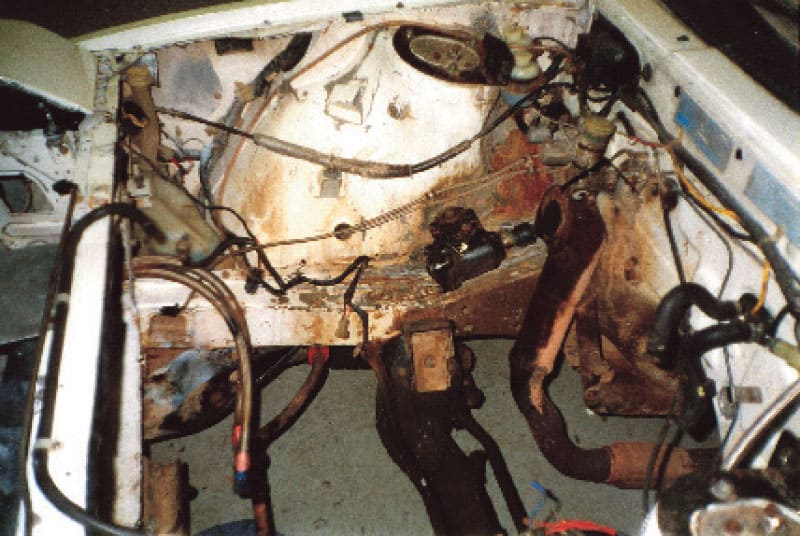
The engine bay was in poor condition (above) until Shand worked his magic on the Starion (below).
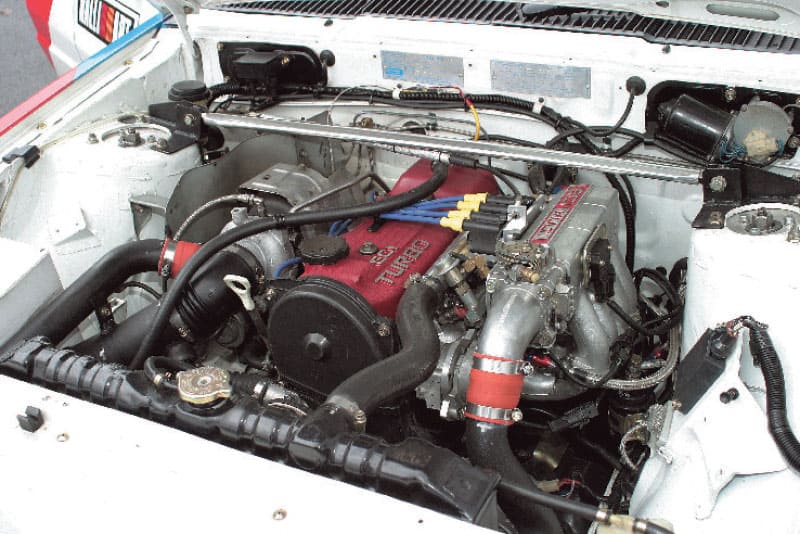
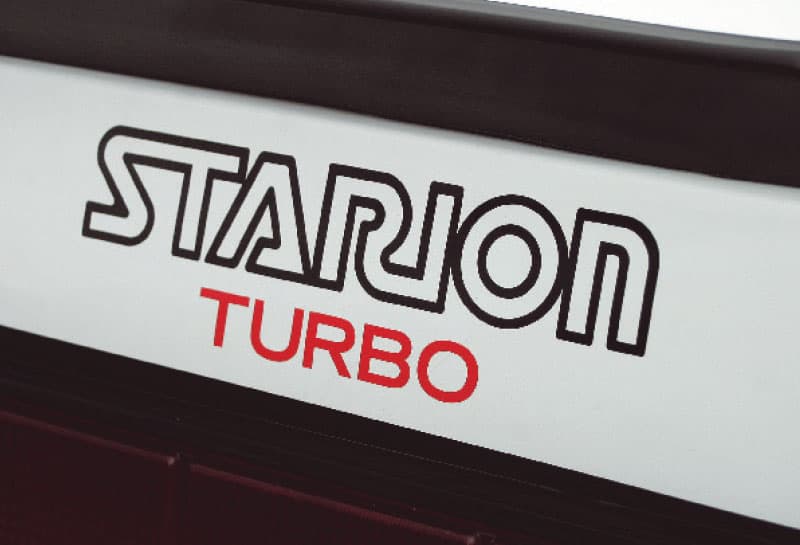 Brian Smith, a part-owner of Dinta’s Officer Smith Automotive business was the main ideas man behind the development of the car.
It remained in the Officers' hands until 1992, changing hands several more times until Shand acquired it in 1998.
With the banning of Group G rallying (an Australia-only category) and the advent of four wheel drive and new regulations, Dinta Officer commenced building of the car, a task that took up most of 1985.
The Starion, now finished, competed in the first Rally Tasmania in 1986 and came away with a win in the newly-introduced Group A category. After this promising debut, Dinta, Kate and the Starion went on to compete in all remaining rounds of the ARC that year, as well as the occasional Victorian Championship event.
So successful were the trio that Kate went on to win her second co-driver’s championship that year, scoring a double that husband Dinta couldn’t do, thanks to the scoring system that was used at that time, although he did come second.
Having pretty much achieved their aims on Australian soil, the Starion was shipped to New Zealand for their round of the World Rally Championship in July 1987.
After a very consistent run against the world’s best factory teams, the Officers finished fifth outright, opening a few eyes after a faultless run. Twelve months later they returned to New Zealand in the car and improved their previous year’s run to come fourth outright.
Brian Smith, a part-owner of Dinta’s Officer Smith Automotive business was the main ideas man behind the development of the car.
It remained in the Officers' hands until 1992, changing hands several more times until Shand acquired it in 1998.
With the banning of Group G rallying (an Australia-only category) and the advent of four wheel drive and new regulations, Dinta Officer commenced building of the car, a task that took up most of 1985.
The Starion, now finished, competed in the first Rally Tasmania in 1986 and came away with a win in the newly-introduced Group A category. After this promising debut, Dinta, Kate and the Starion went on to compete in all remaining rounds of the ARC that year, as well as the occasional Victorian Championship event.
So successful were the trio that Kate went on to win her second co-driver’s championship that year, scoring a double that husband Dinta couldn’t do, thanks to the scoring system that was used at that time, although he did come second.
Having pretty much achieved their aims on Australian soil, the Starion was shipped to New Zealand for their round of the World Rally Championship in July 1987.
After a very consistent run against the world’s best factory teams, the Officers finished fifth outright, opening a few eyes after a faultless run. Twelve months later they returned to New Zealand in the car and improved their previous year’s run to come fourth outright.
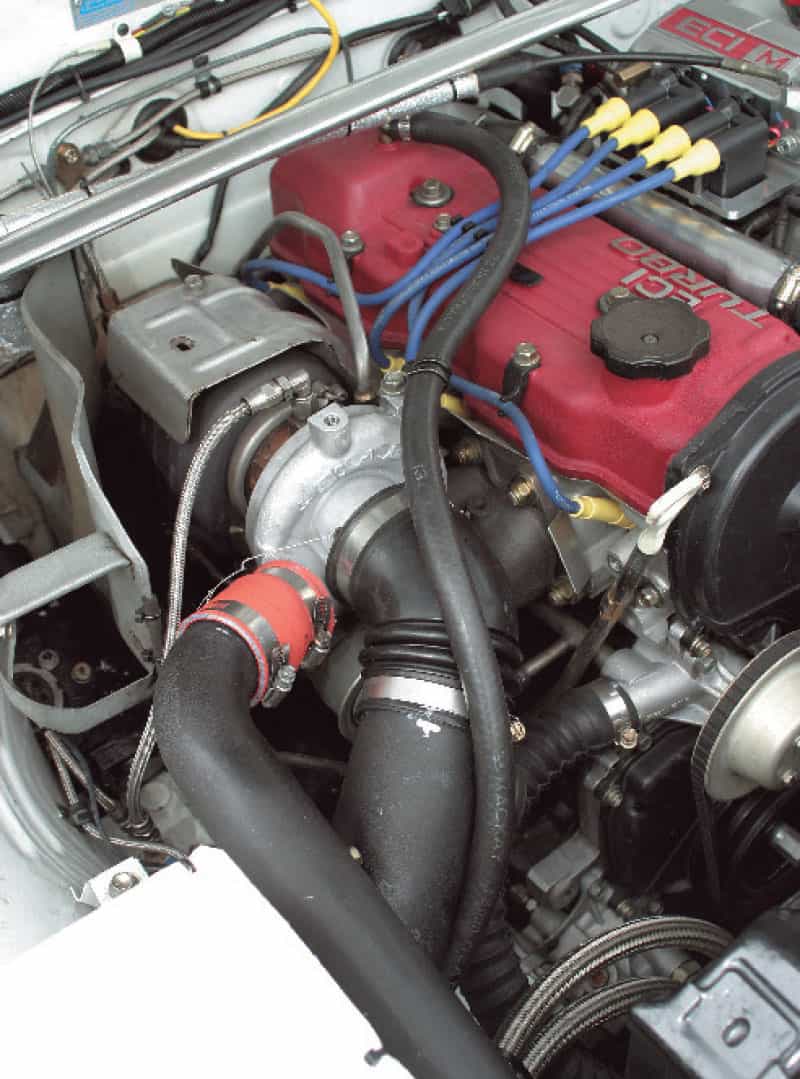
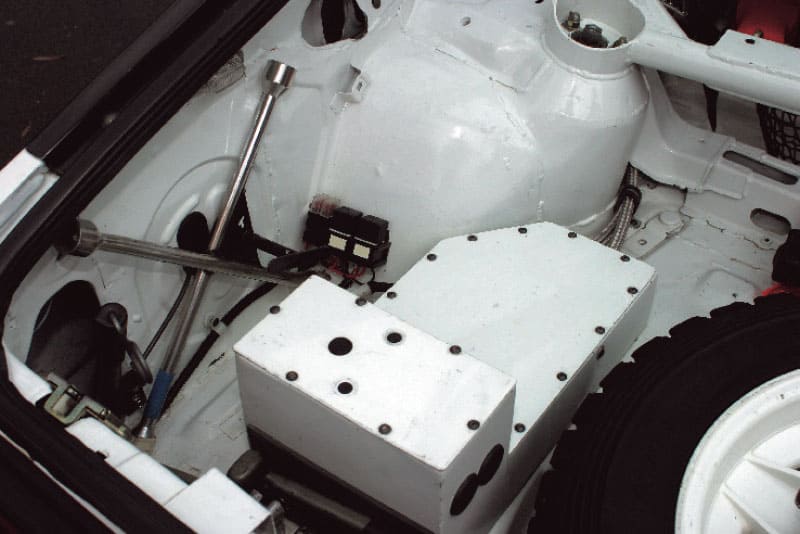 By now the Officers were being noticed by Mitsubishi and some special performance-enhancing Ralliart Japan parts started to find their way on to the car.
With the intention of entering a three-car team in the forthcoming Himalayan Rally, the Starion was fitted with all the latest works components, which included an engine, gearbox, driveline, suspension and brakes, which converted the car to full Group A specifications.
The other two cars were supplied by Ralliart Japan and were driven by Kenjiro Shinozuka, with Fred Gocentas, and Ross Dunkerton, with Steve McKimmie. They finished first and second respectively.
The car was flown to India in the hold of a Boeing 747 as ‘hand luggage’ (presumably saving considerable expense). But their good fortune was not to continue.
Seeded as car one in the event, they were involved in a major accident which basically wrote the car off. The Starion, still with all the special parts fitted, was shipped back to Australia and re-shelled.
With the car back to normal once more, Dinta and Kate took the car to Western Australia in 1988 for the inaugural Rally Australia and finished a fighting seventh outright.
Dinta then turned his attention to other projects so the car was sold off in 1992. It was still a very desirable car and went through several changes of ownership before Brian Shand bought it in 1998.
Shandy first saw the car competing at the Bega Rally in 1986 and fell in love with it straight away.
After finally acquiring it, he began a complete rebuild which, thanks to painstaking attention to detail, took the best part of 12 months.
By now the Officers were being noticed by Mitsubishi and some special performance-enhancing Ralliart Japan parts started to find their way on to the car.
With the intention of entering a three-car team in the forthcoming Himalayan Rally, the Starion was fitted with all the latest works components, which included an engine, gearbox, driveline, suspension and brakes, which converted the car to full Group A specifications.
The other two cars were supplied by Ralliart Japan and were driven by Kenjiro Shinozuka, with Fred Gocentas, and Ross Dunkerton, with Steve McKimmie. They finished first and second respectively.
The car was flown to India in the hold of a Boeing 747 as ‘hand luggage’ (presumably saving considerable expense). But their good fortune was not to continue.
Seeded as car one in the event, they were involved in a major accident which basically wrote the car off. The Starion, still with all the special parts fitted, was shipped back to Australia and re-shelled.
With the car back to normal once more, Dinta and Kate took the car to Western Australia in 1988 for the inaugural Rally Australia and finished a fighting seventh outright.
Dinta then turned his attention to other projects so the car was sold off in 1992. It was still a very desirable car and went through several changes of ownership before Brian Shand bought it in 1998.
Shandy first saw the car competing at the Bega Rally in 1986 and fell in love with it straight away.
After finally acquiring it, he began a complete rebuild which, thanks to painstaking attention to detail, took the best part of 12 months.
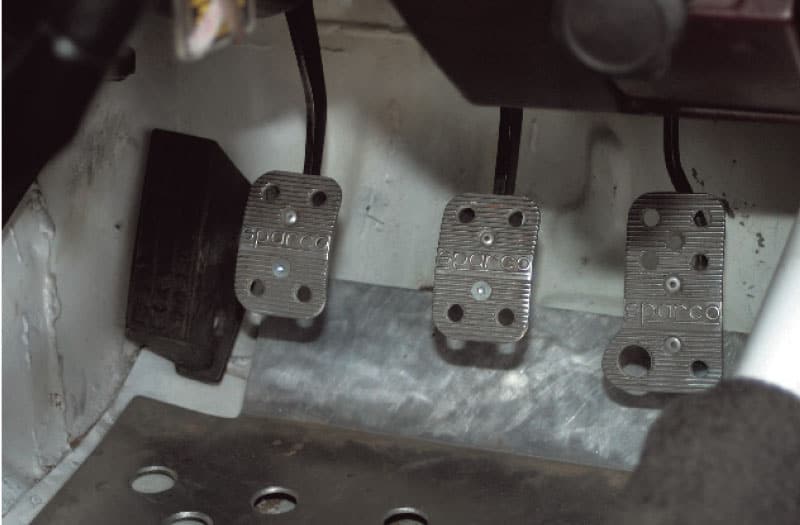
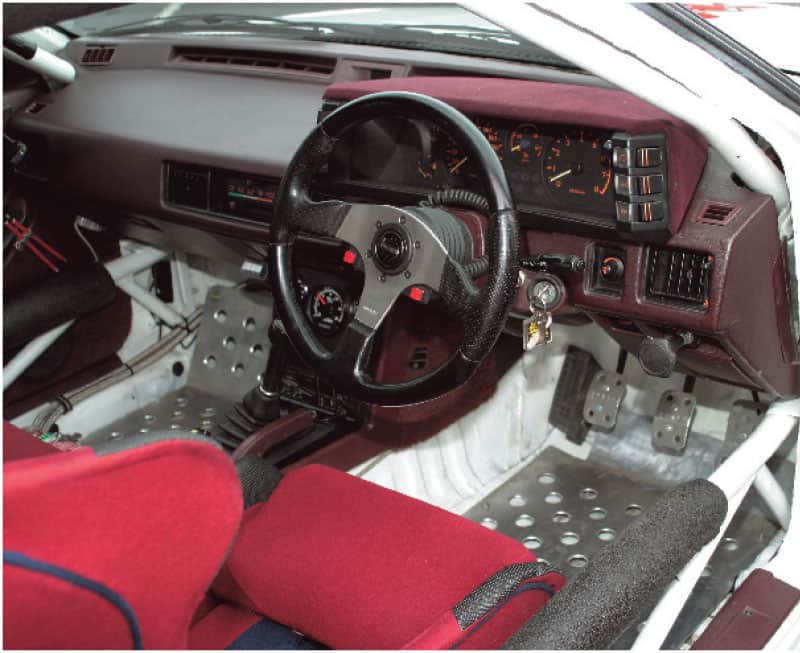
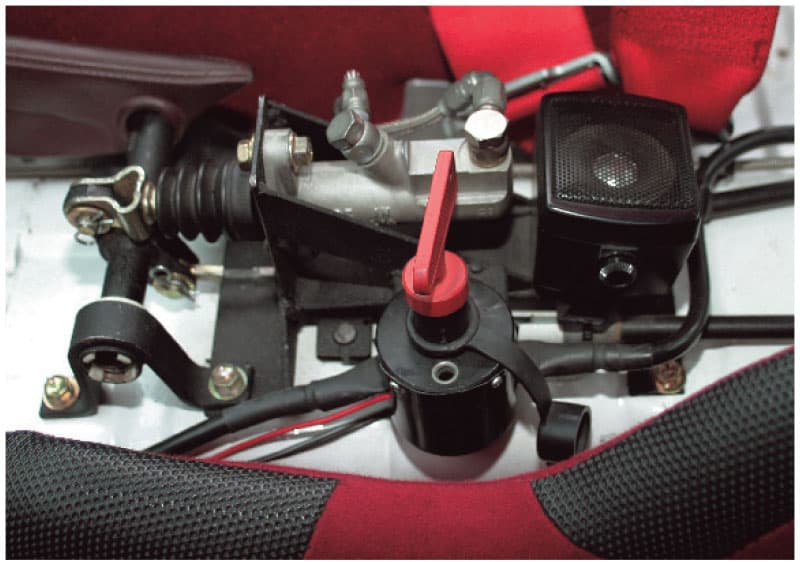 However, the car wasn’t simply to remain a showpiece – it was soon commissioned into competition in the Victorian Rally Championship and years later is still being used as it was meant to be.
It has to be acknowledged that this particular Starion is a very special car, of which there cannot be too many in this level of factory specification.
Greg Carr, another of Australia’s legendary rally drivers of the period, also drove a Starion, but with less success and fewer results.
So what makes this particular car so special? Its specification, thanks to the unique Ralliart Japan parts fitted, is one of a kind.
Firstly, there’s the 2-litre turbo engine that was built by HKS in Japan for Ralliart.
The block contains forged pistons and runs a winged and baffled sump for extra oil capacity. Out front you will find an HKS intercooler that feeds the engine, Bosch fuel pumps with a swirlpot, and a huge oil cooler.
Getting power to the ground is taken care of via a Ralliart Sports Option 5-speed gearbox with a 1:1 fifth gear. This mates to a 215mm AP Racing clutch with a solid centre drive plate.
The power developed goes to the rear wheels and the 4.2 or optional 4.6:1 Group A limited slip differential through Group A driveshafts.
During its rally life, the Starion ran on Pedders Suspension with adjustable platform legs, but for the Himalayan Rally, Japan sent the latest KYB struts with remote canisters and variable rate springs.
All suspension points are fully adjustable with either spherical bearings or rod ends.
These days the car runs with Bilstein inserts inside the four MacPherson struts.
However, the car wasn’t simply to remain a showpiece – it was soon commissioned into competition in the Victorian Rally Championship and years later is still being used as it was meant to be.
It has to be acknowledged that this particular Starion is a very special car, of which there cannot be too many in this level of factory specification.
Greg Carr, another of Australia’s legendary rally drivers of the period, also drove a Starion, but with less success and fewer results.
So what makes this particular car so special? Its specification, thanks to the unique Ralliart Japan parts fitted, is one of a kind.
Firstly, there’s the 2-litre turbo engine that was built by HKS in Japan for Ralliart.
The block contains forged pistons and runs a winged and baffled sump for extra oil capacity. Out front you will find an HKS intercooler that feeds the engine, Bosch fuel pumps with a swirlpot, and a huge oil cooler.
Getting power to the ground is taken care of via a Ralliart Sports Option 5-speed gearbox with a 1:1 fifth gear. This mates to a 215mm AP Racing clutch with a solid centre drive plate.
The power developed goes to the rear wheels and the 4.2 or optional 4.6:1 Group A limited slip differential through Group A driveshafts.
During its rally life, the Starion ran on Pedders Suspension with adjustable platform legs, but for the Himalayan Rally, Japan sent the latest KYB struts with remote canisters and variable rate springs.
All suspension points are fully adjustable with either spherical bearings or rod ends.
These days the car runs with Bilstein inserts inside the four MacPherson struts.
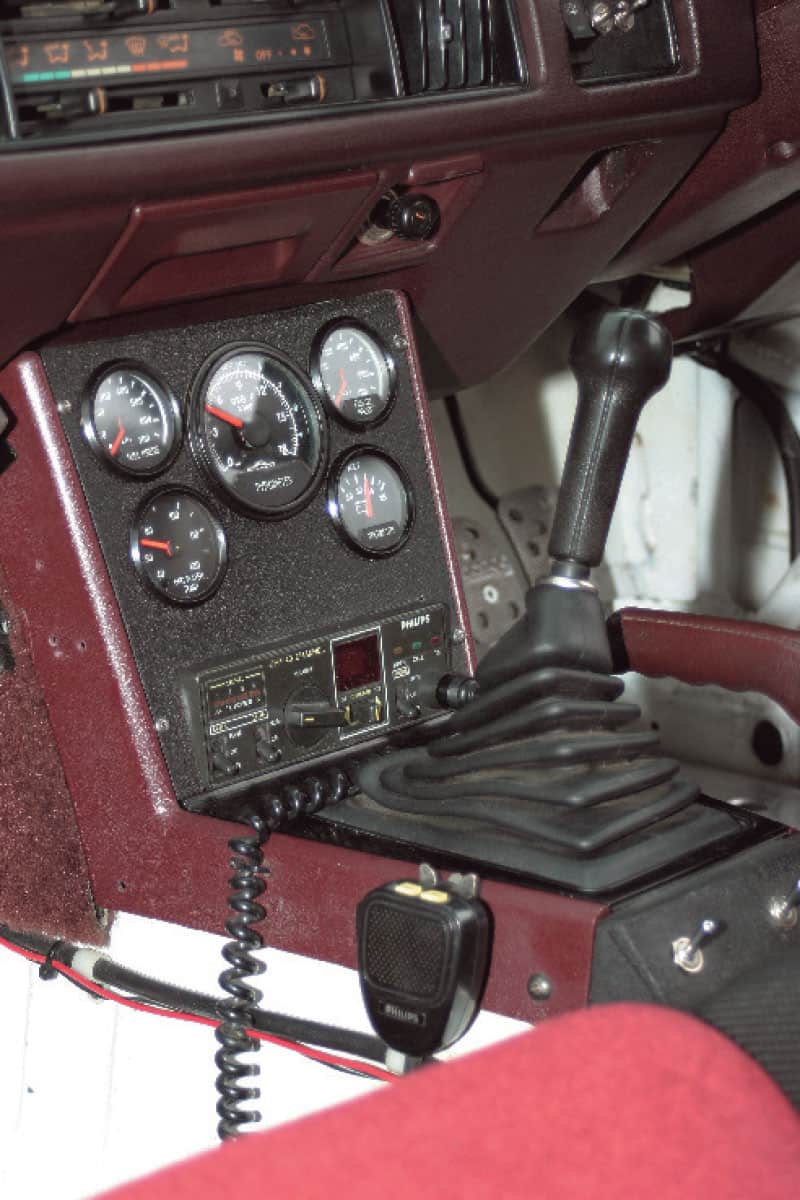
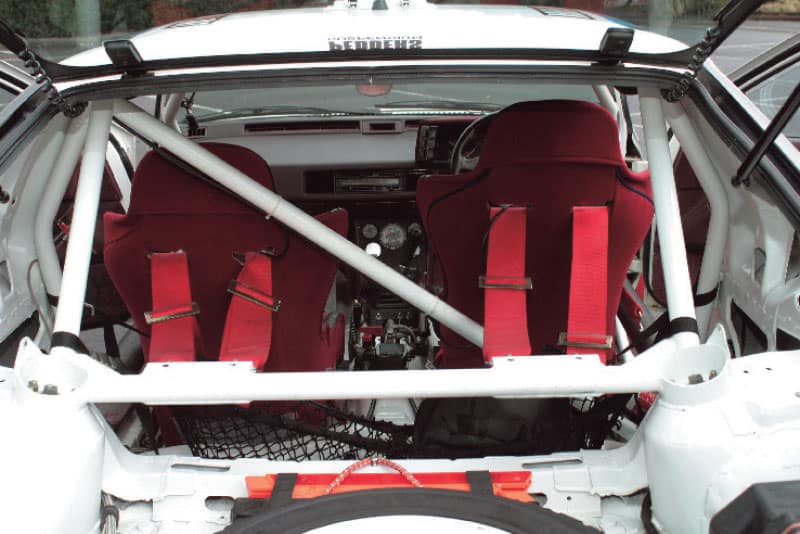
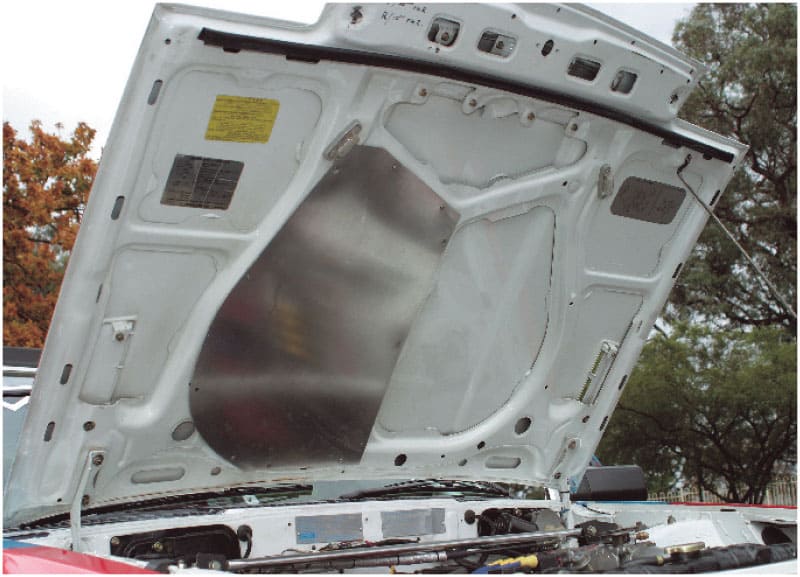 Retardation is taken care of by huge AP Racing rotors and 4-piston calipers, 304 x 28mm at the front and 302 x 20mm at the rear, hauling this heavyweight to a stop as quickly as possible.
There’s an adjustable pedal box to fine tune the front-to-rear balance, and Shandy runs Pagid brake material.
Period 15 x 7” Globe Bathurst mags not only look the part, but prove to be durable as well. Pirelli or Kumho tyres cover the rims, depending on the event.
A thousand words would not be needed to describe the condition of this particular Starion – our pictures do that more than adequately, and it’s easy to see that Brian is the consummate perfectionist when it comes to preparation.
The bodywork is now painted in the livery that Ralliart ran for the fateful Himalayan event.
Inside everything is functional and purposeful and surrounded by a 12-point welded roll cage.
It goes without saying that the shell has been seam welded and strengthened for maximum life in the rough.
Australia has too few classic rally cars with a history in its ranks. Many have been sold off, the eventual owners not appreciating the historic value of their cars. Others have been crashed, stripped, and the bodies thrown away while the mechanicals slowly dissipate into thin air.
Fortunately, this immaculate and unusual Aussie icon has not been allowed to suffer from the ravages of time.
It wouldn’t be overstating its case too much to suggest that it’s in as good a condition as it was when it first rolled out of the Officer/Smith workshop in 1986.
Retardation is taken care of by huge AP Racing rotors and 4-piston calipers, 304 x 28mm at the front and 302 x 20mm at the rear, hauling this heavyweight to a stop as quickly as possible.
There’s an adjustable pedal box to fine tune the front-to-rear balance, and Shandy runs Pagid brake material.
Period 15 x 7” Globe Bathurst mags not only look the part, but prove to be durable as well. Pirelli or Kumho tyres cover the rims, depending on the event.
A thousand words would not be needed to describe the condition of this particular Starion – our pictures do that more than adequately, and it’s easy to see that Brian is the consummate perfectionist when it comes to preparation.
The bodywork is now painted in the livery that Ralliart ran for the fateful Himalayan event.
Inside everything is functional and purposeful and surrounded by a 12-point welded roll cage.
It goes without saying that the shell has been seam welded and strengthened for maximum life in the rough.
Australia has too few classic rally cars with a history in its ranks. Many have been sold off, the eventual owners not appreciating the historic value of their cars. Others have been crashed, stripped, and the bodies thrown away while the mechanicals slowly dissipate into thin air.
Fortunately, this immaculate and unusual Aussie icon has not been allowed to suffer from the ravages of time.
It wouldn’t be overstating its case too much to suggest that it’s in as good a condition as it was when it first rolled out of the Officer/Smith workshop in 1986.
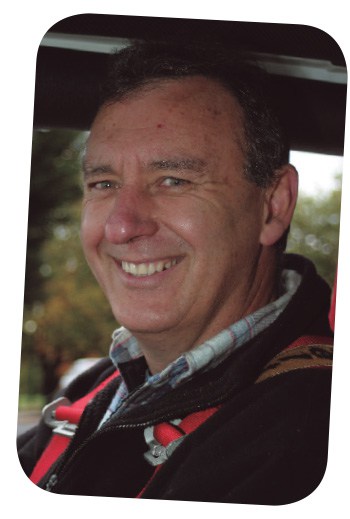
Brian Shand.
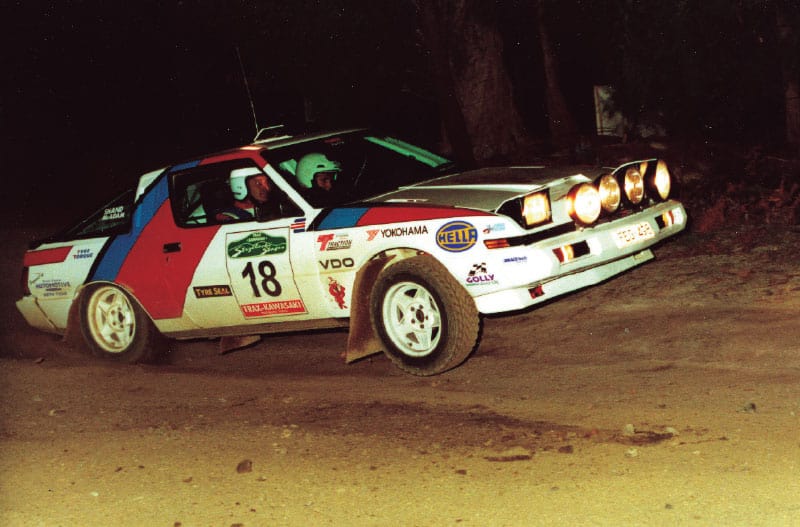 TECH SPEC
Body
1984 JB Mitsubishi Starion, Seam welded and strengthened.
12 point welded roll cage
Engine
Turbocharged 2.0ltr, as built by HKS for Ralliart Japan.
Forged pistons ,Forged H beam rods, twin Bosch fuel pumps with swirl pot, Intercooler, RX7 oil cooler, baffled and winged sump, 3” exhaust.
Transmission
Ralliart “Sports Option” 5 speed with 1:1 fifth gear, ratios are very similar to a Nissan Option One box,
Group “A” LSD and 6 bolt drive shafts with either 4.2 or 4.6:1 ratio.
215mm AP Racing clutch with single solid centre drive plate.
Suspension
Macpherson struts front and rear with Bilstien inserts.
All suspension points are fully adjustable with spherical bearings and rod ends.
Brakes
Front : 304 x 28mm AP Racing rotors and 4 piston calipers
Rear : 302 x 20mm AP Racing rotors and 4 piston calipers
Remote adjustable Pedal box and hydraulic handbrake.
Pagid brake material
Wheels and Tyres
15 x 7 Globe Bathurst mags.
TECH SPEC
Body
1984 JB Mitsubishi Starion, Seam welded and strengthened.
12 point welded roll cage
Engine
Turbocharged 2.0ltr, as built by HKS for Ralliart Japan.
Forged pistons ,Forged H beam rods, twin Bosch fuel pumps with swirl pot, Intercooler, RX7 oil cooler, baffled and winged sump, 3” exhaust.
Transmission
Ralliart “Sports Option” 5 speed with 1:1 fifth gear, ratios are very similar to a Nissan Option One box,
Group “A” LSD and 6 bolt drive shafts with either 4.2 or 4.6:1 ratio.
215mm AP Racing clutch with single solid centre drive plate.
Suspension
Macpherson struts front and rear with Bilstien inserts.
All suspension points are fully adjustable with spherical bearings and rod ends.
Brakes
Front : 304 x 28mm AP Racing rotors and 4 piston calipers
Rear : 302 x 20mm AP Racing rotors and 4 piston calipers
Remote adjustable Pedal box and hydraulic handbrake.
Pagid brake material
Wheels and Tyres
15 x 7 Globe Bathurst mags.
